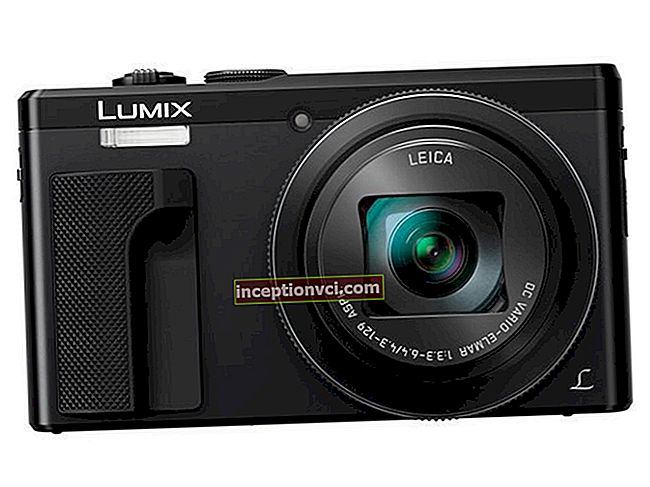AF (AutoFocus)
Refers to Nikon power-operated autofocus lenses. They do not work with Nikon D3xxx, Nikon D4x, Nikon D5xxx and Nikon D6x series cameras. For such lenses, a camera with a "screwdriver" is needed, where autofocus is adjusted using a drive built into the camera. Example - Nikon AF 50mm f / 1.8D

AF-S
For autofocus, these lenses use a silent ultrasonic motor. Focuses accurately, quietly and quickly. Works with all modern cameras. An example is Nikon AF-S 50mm f / 1.8G.
CRC (Close-Range Correction system)
The lens focuses at close range. This mark is used in the Micro or fisheye specification. It is sometimes used in wide-angle and some telephoto Nikkor lenses. An example is Nikon AF-S Micro 40mm f / 2.8G DX.
NIKKOR is the trademark under which Nikon manufactures its optics.
D (Distance information)
Autofocus lenses indicate the focusing range to the subject. This letter stands after the aperture value and is characteristic (but not always!) Of AF lenses. Models that do not have this letter in the markings have difficulties with matrix metering and TTL flash photography. Without a flash, they work the same way.
D-marked lenses have an aperture adjustment ring. You will be able to manually adjust the aperture, and not through the camera. An example is Nikon AF 85mm f / 1.8D.

DC (Defocus-image Control)
A function that changes the "bokeh" (fuzziness). It blurs the foreground or background using a special ring on the lens without affecting the focused subject. Example - Nikon AF DC-Nikkor 135mm f / 2.0D.
DX
Refers to non-full frame lenses for Nikon DX crop APS-C sensors. If this lens is mounted on a full-frame camera, the image will be vignetted (with dark corners). DX lenses are cheaper, more compact and lighter than full-frame lenses, and offer the same quality.
If you are shooting full frame, it is better not to buy a "cropped" lens. The exception is Nikkor AF-S 35mm f / 1.8G DX. It works well on full frame.
E (Electromagnetic diaphragm, i.e. electromagnetic diaphragm)
The opening / closing of the diaphragm occurs due to the electromagnetic mechanism, and not with the help of a "shock" structure in the camera, acting on the protrusion at the bottom of the lens (the so-called "jump rope"). The electro iris accurately adjusts the aperture at high burst speeds. The marking is located after the aperture value - where the symbol "D" is. Worth buying for D4, D4s and Nikon D5 users. An example is the Nikon AF-S 24-70mm f / 2.8E ED VR.

ED (Extra-low Dispersion, i.e. glass with ultra-low dispersion)
An optical lens in a lens with an ultra-low dispersion frequency. Reduces chromatic aberration (color distortion). Provides sharpness and contrast at its widest aperture. Example - Nikon AF-S 35mm f / 1.8G ED.
Fisheye (fisheye)
The lens is distinguished by a 180-degree diagonal viewing angle and a specific image rounding. Example - Nikon AF Fisheye 10.5mm f / 2.8G DX ED.

G (Gelded, translated as "castrated")
The lens automatically controls the aperture and improves its accuracy in 1/3-stop increments. As well as D-marking lenses, it conveys the distance value for focusing the camera. An example is Nikon AF-S 85mm f / 1.8G.
Micro
This mark belongs to the Macro lens class. They have high sharpness and close focusing distance. Example - Nikon AF-S 105mm f / 2.8G VR Micro.
N (Nano Crystal Coat, i.e. anti-reflective coating)
Serves to reduce glare and ghosting when shooting. On lenses it is marked with the letter N, enclosed in a "gold" hexagon. Framed by a gold stripe on the front of the lens, such as the Nikon AF-S 85mm f / 1.4G.
PF (Phase Fresnel)
The lens has a Fresnel lens. It reduces its weight and dimensions. Simultaneously replaces the lens group without compromising optical quality. Example - Nikon AF-S 300mm f / 4E PF ED VR.
VR (Vibration Reduction)
Optical image stabilization system built into the lens. Based on the shift of the lens correcting group. Does not smear moving objects in poor lighting conditions. You can shoot without a tripod. Example - Nikon AF-S 18-55 f / 3.5-5.6 VR II.

AS (Aspherical lens elements, i.e. aspherical lenses)
Aspherical variable radius lenses. They correct color distortion and make the lens lighter. Examples are Nikon AF-S 24mm f / 1.8G ED and Nikon AF-S 16-80mm f / 2.8-4E DX ED VR.
There is also the ASED mark, which combines AS and ED. These are ultra-low dispersion aspherical lenses.
CRC (Close-Range Correction system)
These types of Nikon lenses are found in the macro or fisheye specifications. Sometimes - in wide-angle models and some telephoto lenses. They focus at close range. An example is Nikon AF-S Micro 40mm f / 2.8G DX.

Fx
This is a full frame lens. Unlike the DX, it works well on crop cameras. Example - Nikon AF-S 50mm f / 1.4G.
HRI (High Refractive Index lens)
The lens significantly changes the direction of the light (its angle). Reduces field curvature and spherical aberrations that give a soft effect. An example is the Nikon AF-S 24-70mm f / 2.8E ED VR.
IF (Internal Focusing, i.e. internal focusing)
The lens size does not change while focusing. This feature is useful for those using polarizing and gradient filters because focusing does not "knock" the filter setting. Less dust gets into the lens. In addition, the use of internal focusing makes the lens more compact and lighter, and the camera focuses faster.
IF lens comes in handy:
- when you shoot in bad weather: rain, strong wind, snow;
- if you like to shoot with a polarizing filter;
- even if you are photographing with a normal filter and in good conditions.
An example is Nikon AF-S 70-200mm f / 4G ED VR.

ML (Meniscus Protective Lens, translated as meniscus protective lens)
Minimizes ghosting. Example - Nikon AF-S 400mm f / 2.8E FL ED VR.
RF (Rear Focusing)
Focusing is carried out using the rear lens group. This speeds up the automatic focusing process. Suitable for reportage shooting. Example - Nikon AF-S 35mm f / 1.8G ED.
SIC (Super Integrated Coating)
The special coating of the lenses "gives out" rich color reproduction, eliminates glare and ghosting. Example - AF-S NIKKOR 200-500mm f / 5.6E ED VR.
Useful article: "How to properly clean a camera lens?"
Watch the video review of Nikon's professional lens









